
The name "Achilles tendon" has a fascinating origin rooted in Greek mythology. It's named after Achilles, the legendary hero of the Trojan War, as recounted in Homer's Iliad and other tales.
His mother, Thetis, dipped him into the River Styx to make him immortal, but held him by his heel, leaving that one spot vulnerable. Achilles was later killed by an arrow to this very heel.
This means a problematic Achilles isn't just about the heel, a tight one can also cause issues higher up in the calf. Since it's the body's largest tendon, ensuring your Achilles tendon remains flexible and can stretch adequately is crucial for healthy lower leg function and movement. So, what's the most effective way to keep your Achilles relaxed and loose?
How to loosen a tight Achilles tendon?
Stretches for the Achilles tendon
The best approach to prevent a tight Achilles tendon is by performing some light stretches consistently. You don't have to be experiencing tightness to do these, they can simply be incorporated into your regular exercise routine, perhaps as part of your warm-up before engaging in more strenuous activities.
The Achilles pull
The initial stretch to ease and prevent a tight Achilles tendon is the Achilles pull. Start by putting your heel on the floor, then find a wall or any vertical surface to place the balls of your feet against. Once set, simply lean your body forward until you feel a gentle stretch.
Lunges
The lunge is an excellent follow-up stretch for your Achilles once you've done a gentle warm-up. To perform a lunge stretch, position one foot behind the other, leaving about five inches between them. Next, step forward with your front foot, keeping your back leg perfectly straight throughout. Make sure both feet stay flat on the ground as you complete this stretch. Then, switch feet and repeat the process.
Single leg heel drop
Stand on an elevated surface like a step. Lift and bend one leg, keeping it off the ground. Place the ball of your standing foot near the edge of the step, ensuring that the leg stays straight. Then, in a slow and controlled motion, raise that heel off the ground and slowly lower it back down. Repeat this a few times, then switch to your other leg.
Seated pull stretch
The final stretch to help keep a tight Achilles tendon at bay is the sitting pull stretch. To do this stretch, sit down with something ready to pull your foot back—a rolled-up towel or an old shirt will work perfectly. Once seated, place your feet on the towel (or whatever you're using), grasp both ends and gently pull them towards yourself.

The Best Insoles for Achilles Tendonitis
A quality pair of insoles for Achilles tendonitis will effectively lessen the strain on the Achilles tendon, allowing it adequate time to heal from inflammation. This means the orthotics should enhance or correct any biomechanical inefficiencies in your feet and lower legs that might put extra stress on your Achilles.
The PCSsole Signature Supportive Shape boasts a deep heel cup that securely cradles and supports your heel. This heel cup works in tandem with the arch support, fostering neutral alignment across your entire leg structure.
With neutral alignment your ankles and knees are aligned optimally, ensuring that energy and force move through your legs efficiently, avoiding excess strain on tendons like the Achilles tendon.
Whichever insoles you choose, you can rest assured that if they don’t work for you have the choice of returning them for an exchange or refund within 60 days of purchase.


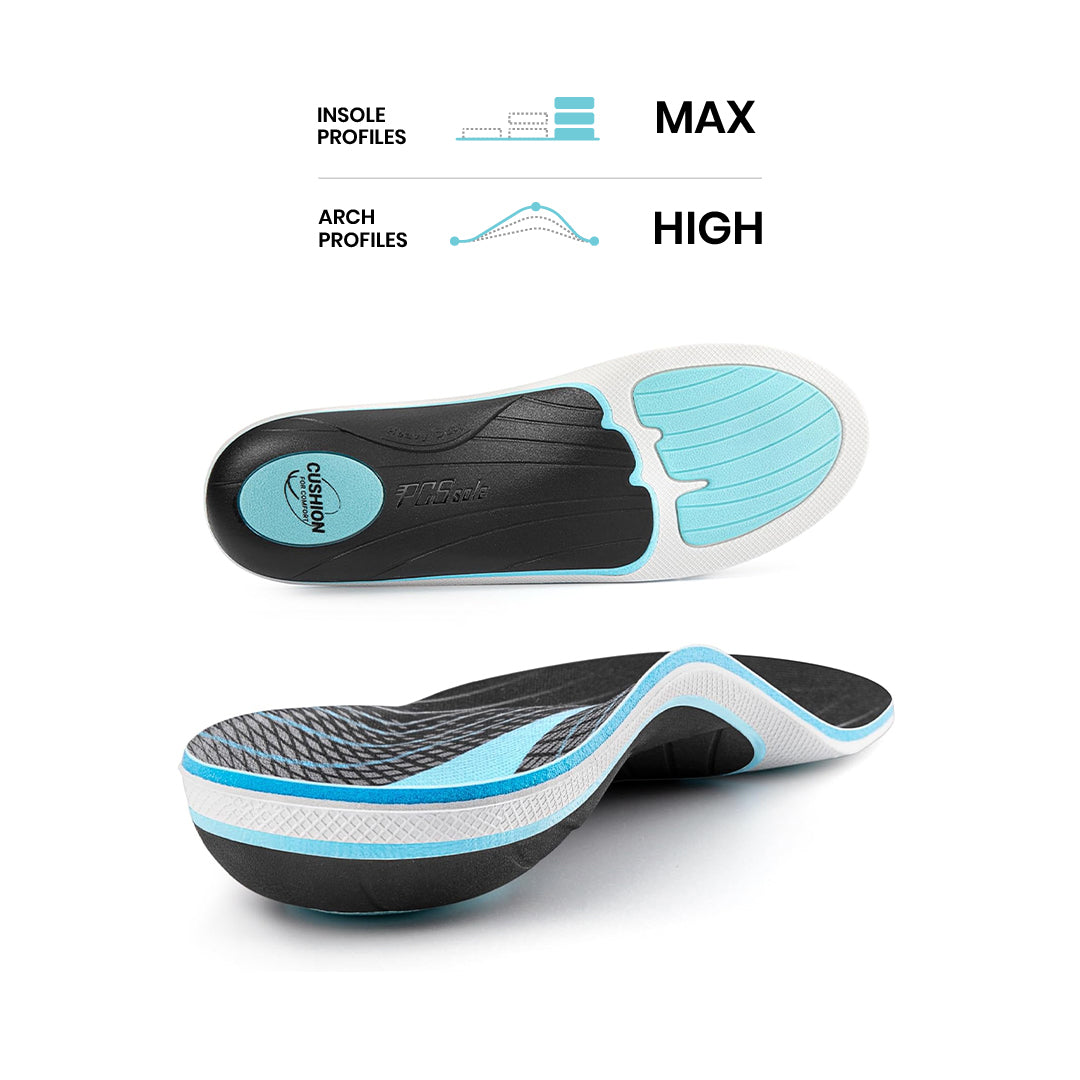
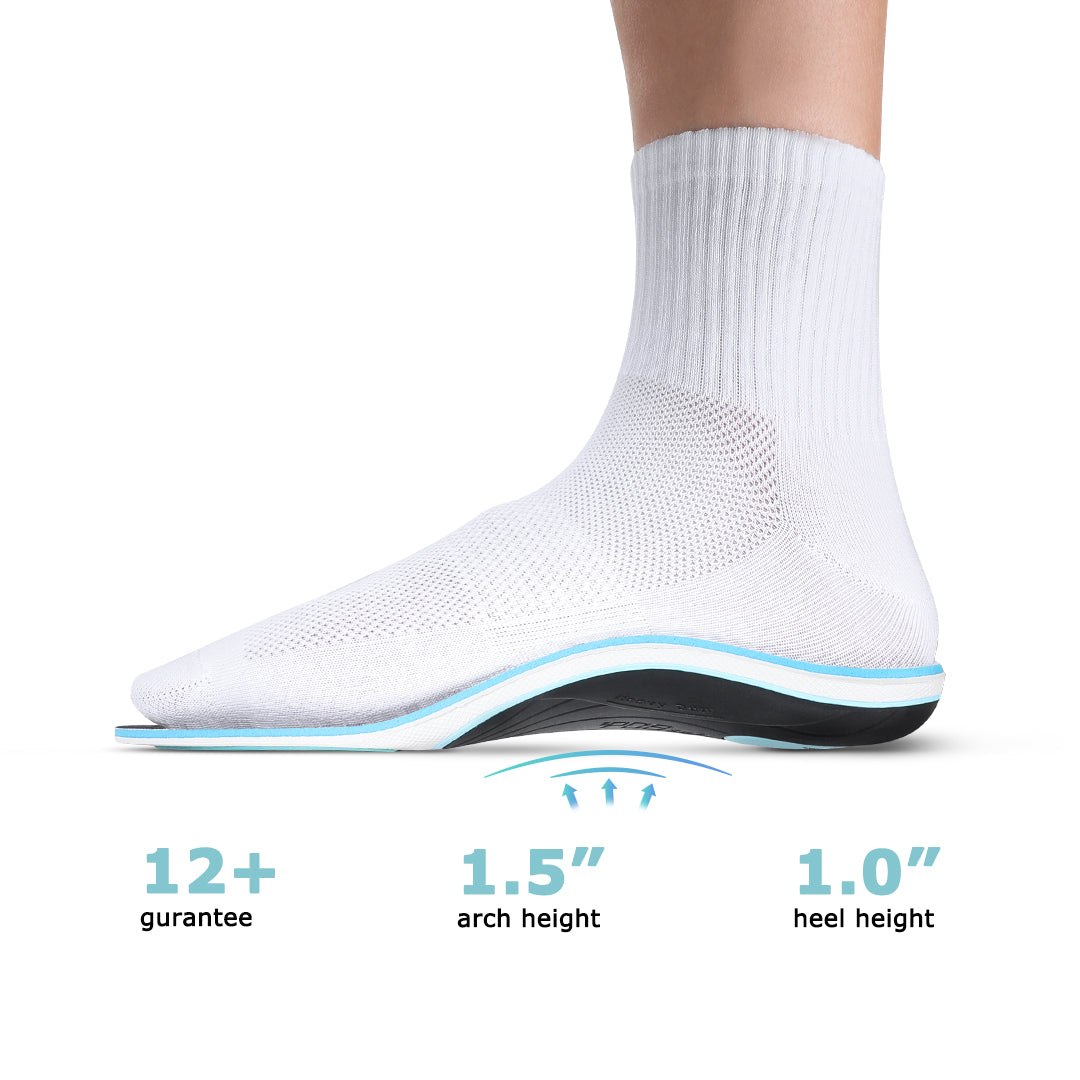
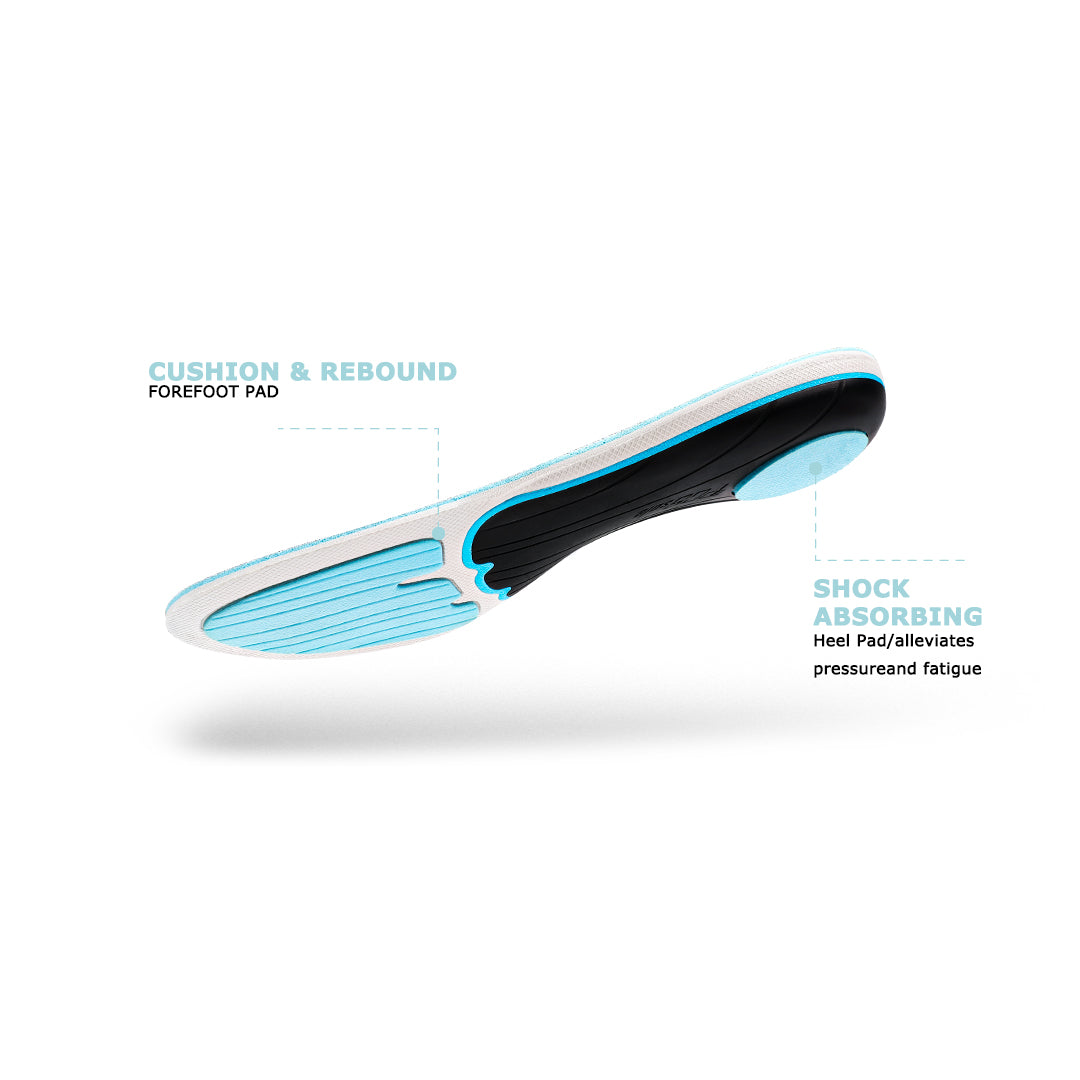
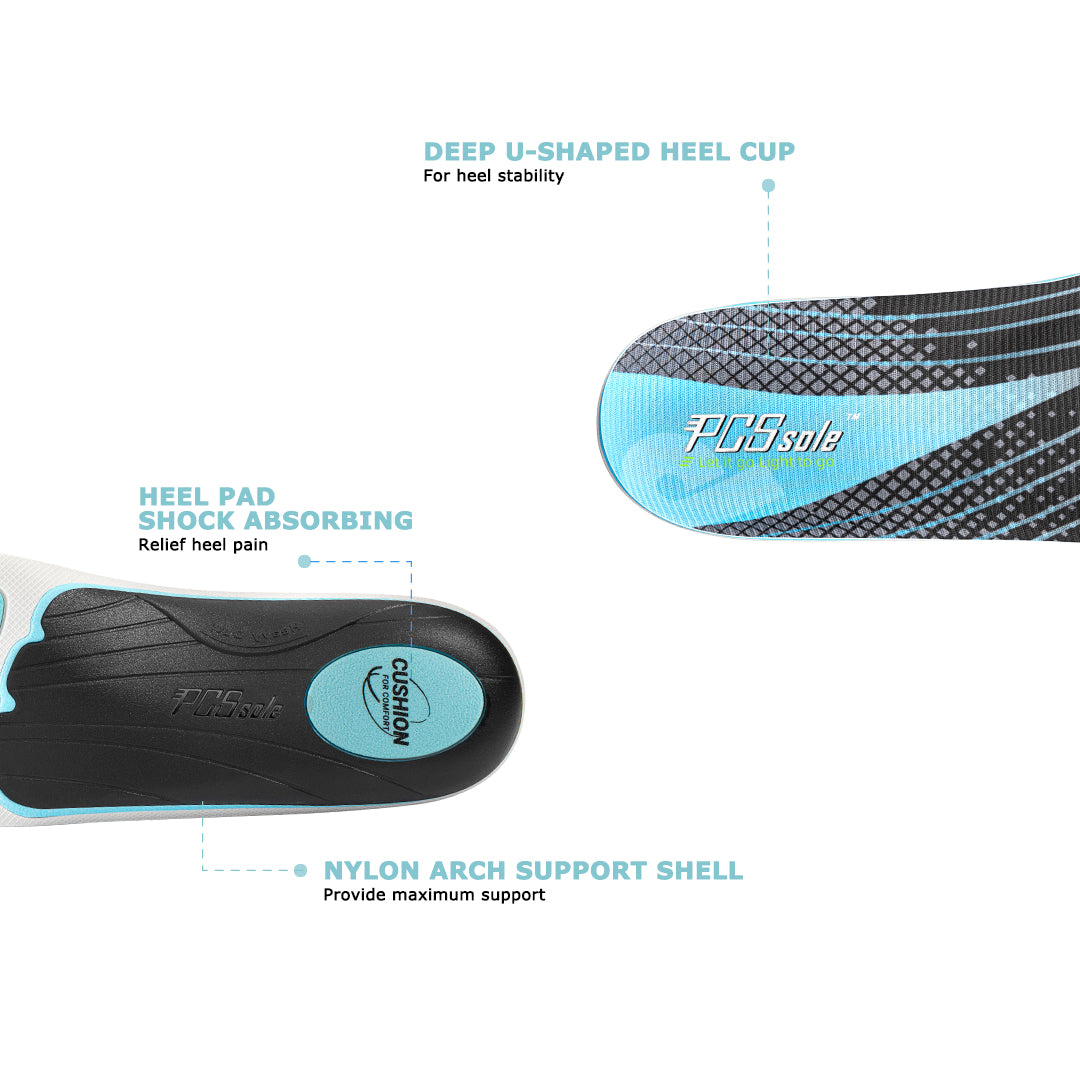



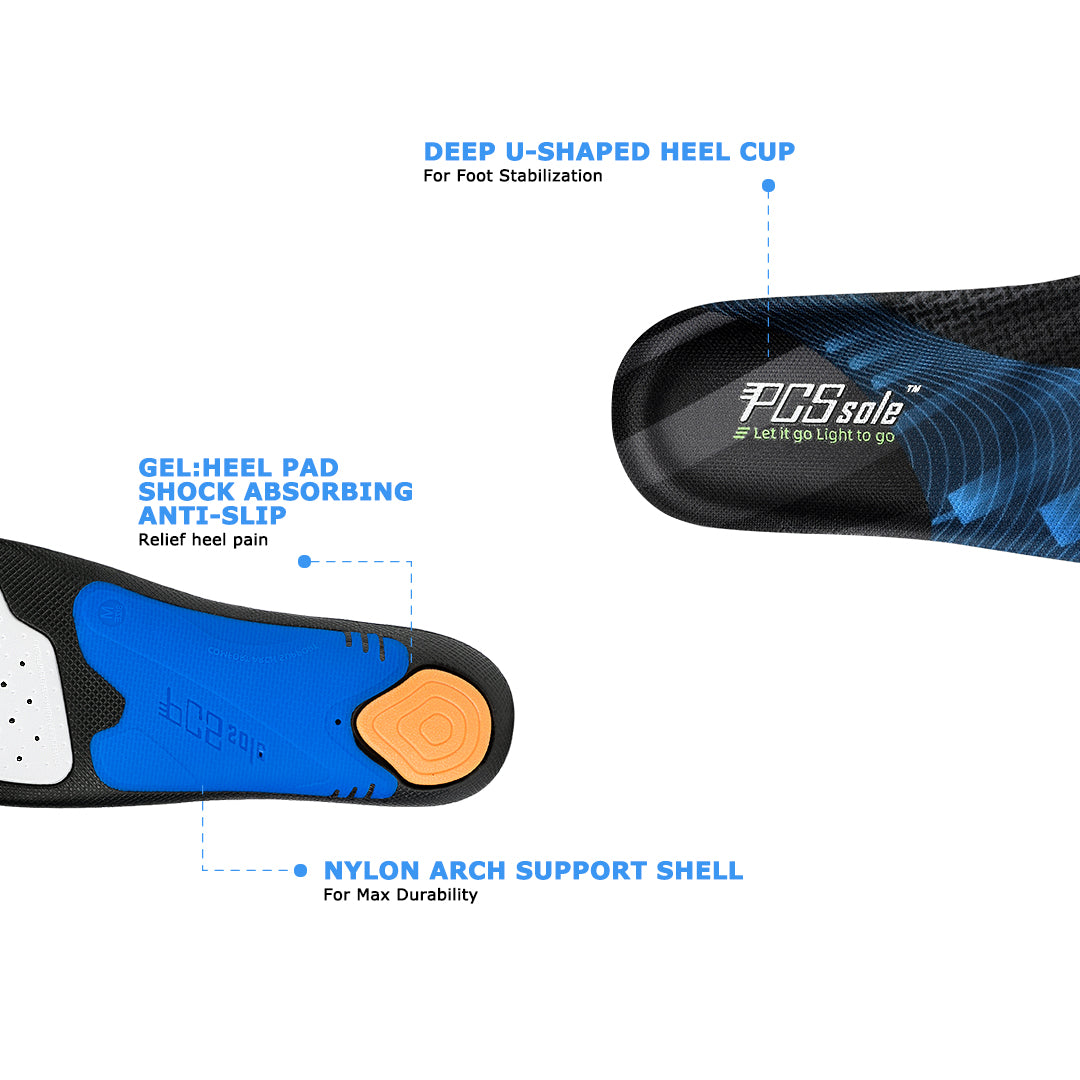
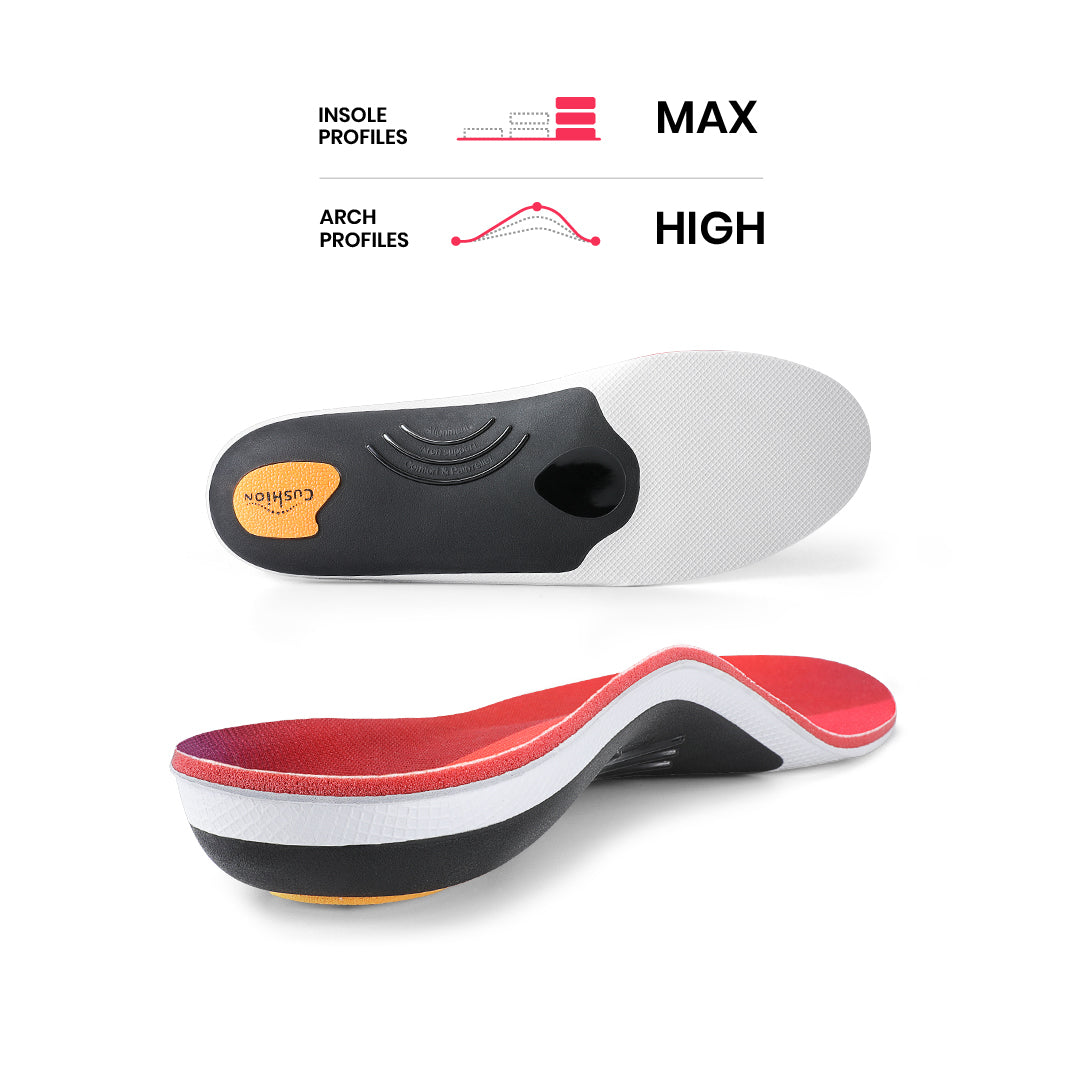

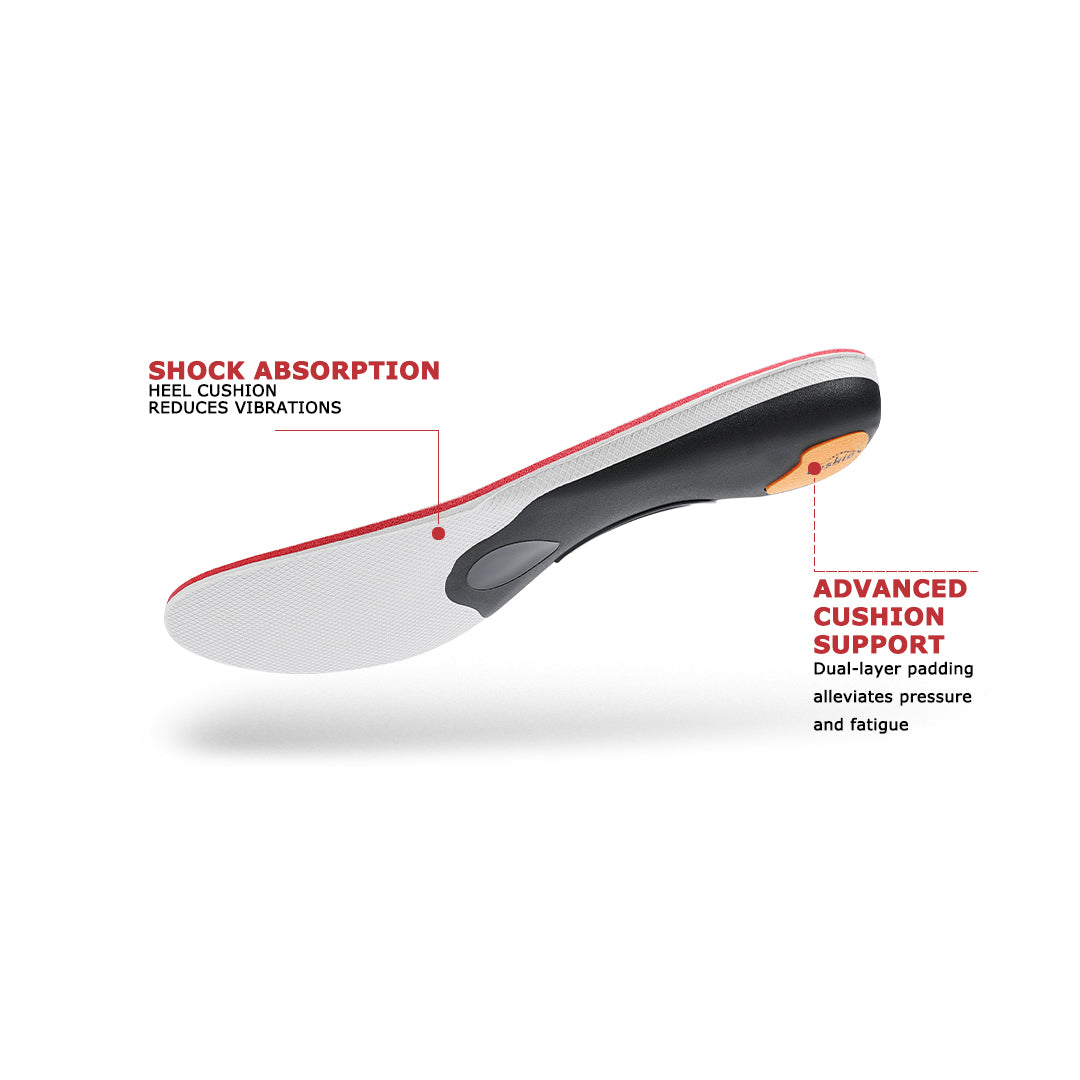

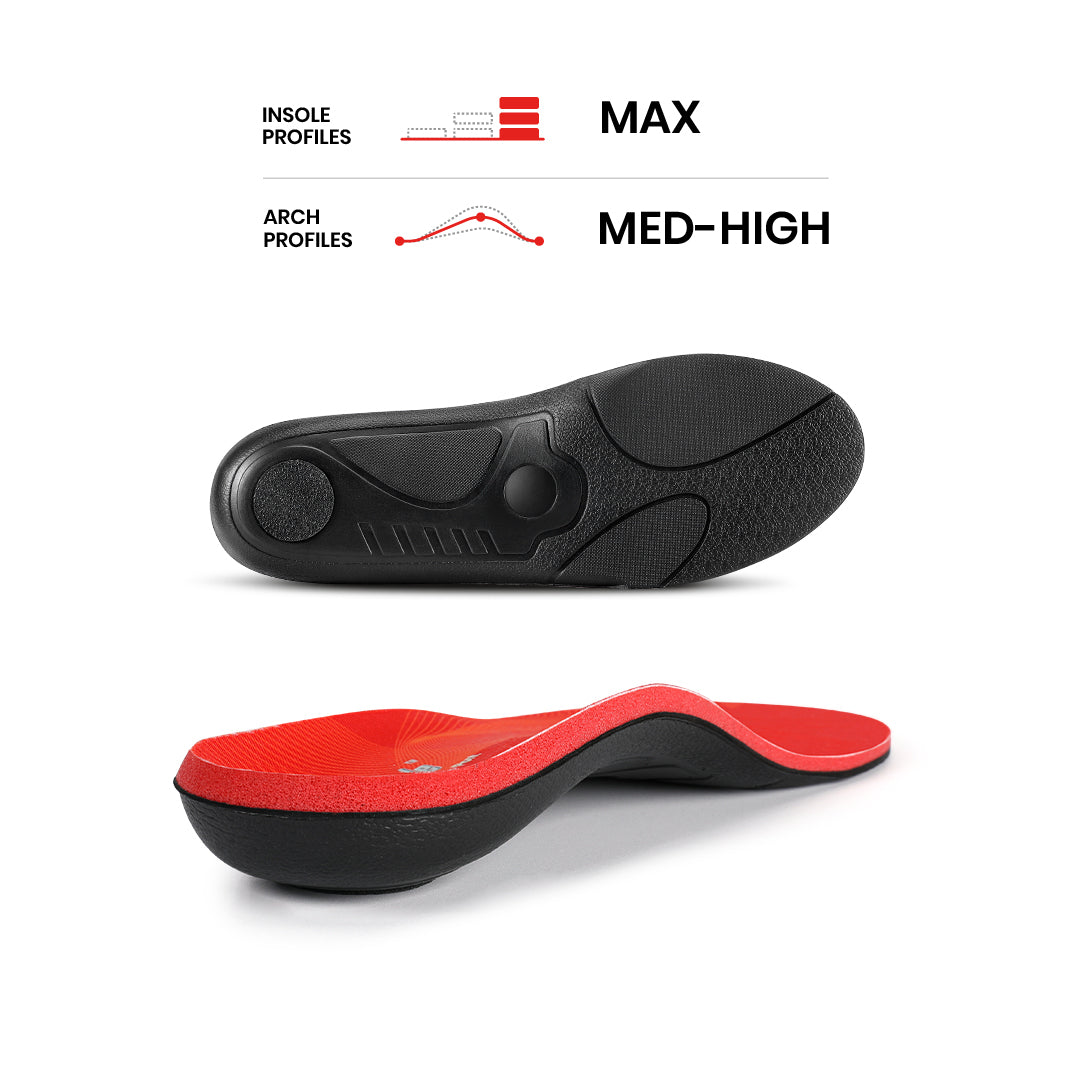
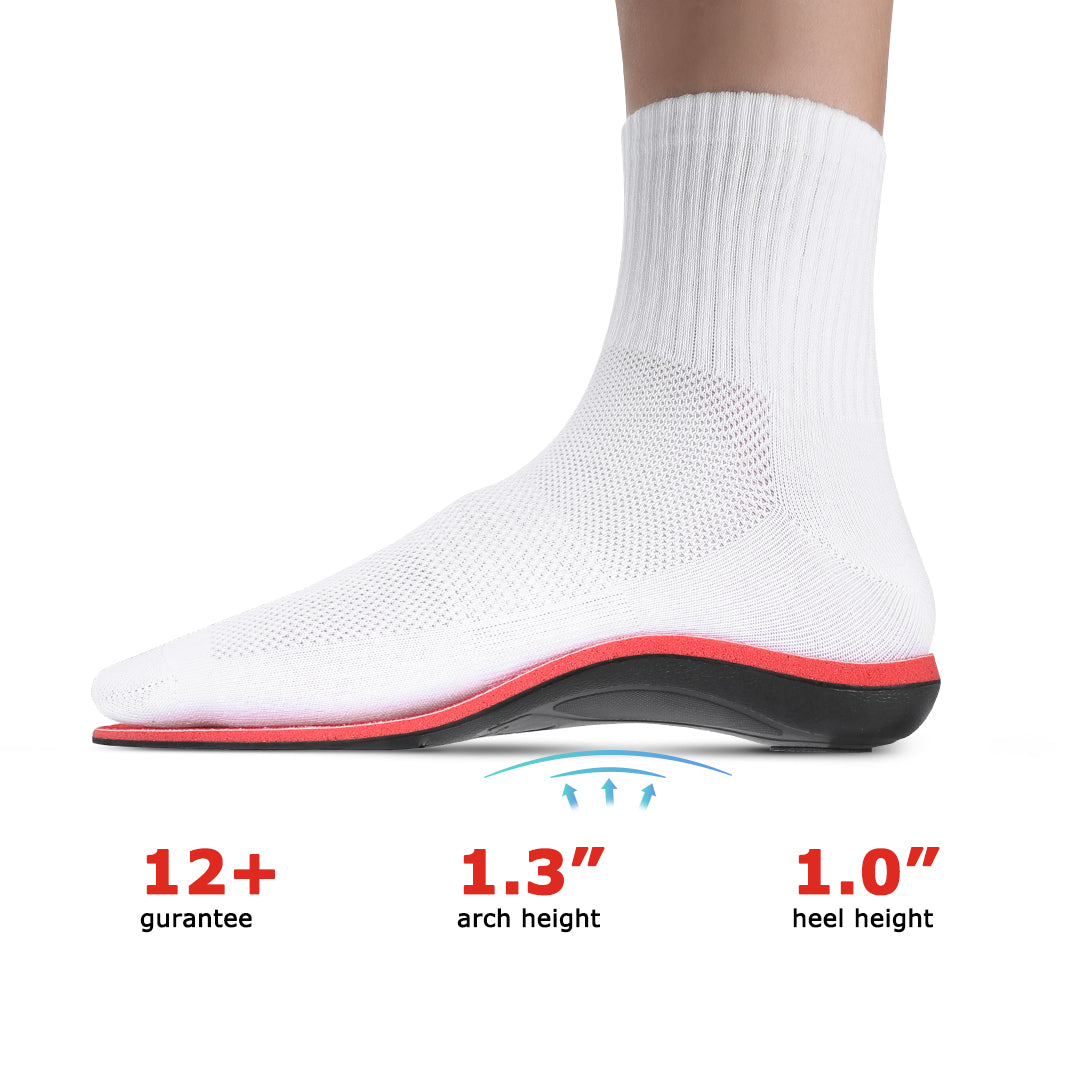

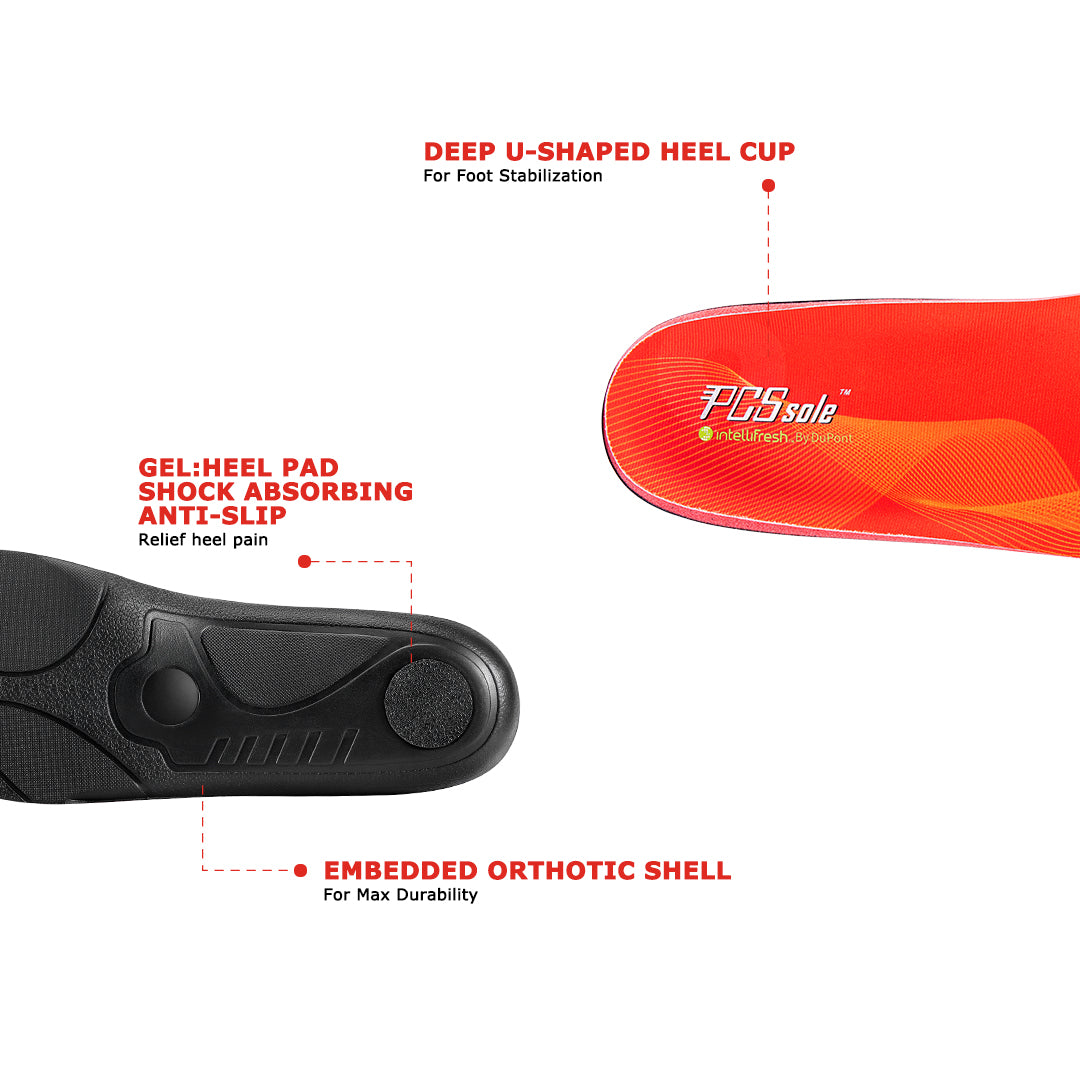
Share:
Plantar Fascia vs Plantar Fasciitis And Heel Spurs vs Plantar Fasciitis